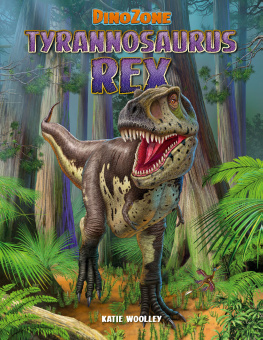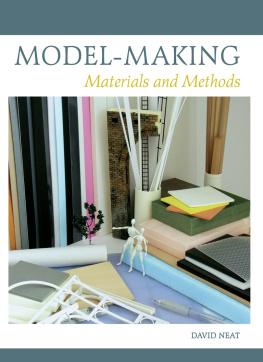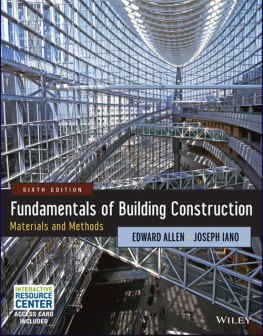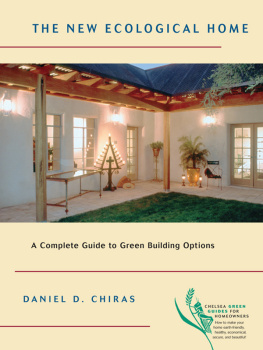Tom Woolley - Natural Building Techniques A Guide to Ecological Methods and Materials.
Here you can read online Tom Woolley - Natural Building Techniques A Guide to Ecological Methods and Materials. full text of the book (entire story) in english for free. Download pdf and epub, get meaning, cover and reviews about this ebook. City: Ramsbury, year: 2022, publisher: The Crowood Press, genre: Children. Description of the work, (preface) as well as reviews are available. Best literature library LitArk.com created for fans of good reading and offers a wide selection of genres:
Romance novel
Science fiction
Adventure
Detective
Science
History
Home and family
Prose
Art
Politics
Computer
Non-fiction
Religion
Business
Children
Humor
Choose a favorite category and find really read worthwhile books. Enjoy immersion in the world of imagination, feel the emotions of the characters or learn something new for yourself, make an fascinating discovery.
- Book:Natural Building Techniques A Guide to Ecological Methods and Materials.
- Author:
- Publisher:The Crowood Press
- Genre:
- Year:2022
- City:Ramsbury
- Rating:5 / 5
- Favourites:Add to favourites
- Your mark:
- 100
- 1
- 2
- 3
- 4
- 5
Natural Building Techniques A Guide to Ecological Methods and Materials.: summary, description and annotation
We offer to read an annotation, description, summary or preface (depends on what the author of the book "Natural Building Techniques A Guide to Ecological Methods and Materials." wrote himself). If you haven't found the necessary information about the book — write in the comments, we will try to find it.
Tom Woolley: author's other books
Who wrote Natural Building Techniques A Guide to Ecological Methods and Materials.? Find out the surname, the name of the author of the book and a list of all author's works by series.
Natural Building Techniques A Guide to Ecological Methods and Materials. — read online for free the complete book (whole text) full work
Below is the text of the book, divided by pages. System saving the place of the last page read, allows you to conveniently read the book "Natural Building Techniques A Guide to Ecological Methods and Materials." online for free, without having to search again every time where you left off. Put a bookmark, and you can go to the page where you finished reading at any time.
Font size:
Interval:
Bookmark:



Earth wall in house in Fifeshire, Scotland (photo: Becky Little); back cover top: interior CLT finished walls, Adderstone Crescent (photo: Eurban); back cover bottom: cob handrail by Becky Little (photo: Becky Little)

First published in 2022 by
The Crowood Press Ltd
Ramsbury, Marlborough
Wiltshire SN8 2HR
www.crowood.com
This e-book first published in 2022
Tom Woolley 2022
All rights reserved. This e-book is copyright material and must not be copied, reproduced, transferred, distributed, leased, licensed or publicly performed or used in any way except as specifically permitted in writing by the publishers, as allowed under the terms and conditions under which it was purchased or as strictly permitted by applicable copyright law. Any unauthorised distribution or use of this text may be a direct infringement of the authors and publishers rights, and those responsible may be liable in law accordingly.
British Library Cataloguing-in-Publication Data
A catalogue record for this book is available from the British Library.
ISBN 978 0 7198 4048 7
Cover design: Maggie Mellett
Disclaimer
Every effort has been made by the authors and the publishers to check the accuracy of information contained in this book however readers are encouraged to use this information as a starting point only. It will be necessary to check for updated contact and product information as this will change over time. It is also important to obtain the best possible professional advice about design, construction and material specification when undertaking a project. The author cannot take responsibility for any building or design work decisions based on ideas found in this book.
Dedication
In memory of Heimir Salt,
natural-born anarchist and self-builder
FOREWORD
I AM ALWAYS AMAZED AT THE AMOUNT OF material and sheer hard work it takes to erect a building. Even a small house takes truckloads of the stuff, with fittings and materials coming from just about everywhere on the face of the planet. Sadly, the end result is architecture that is often badly built, barely fit for human habitation, and toxic to life. We are destroying our relationship with the natural world as we huddle behind triple-glazed windows in mechanically ventilated rooms, disconnected from experience of nearly everything outside. Human activities are so huge now that by the end of 2020 human-made materials outweighed Earths entire biomass. Around 1900 this figure ran at about 3 per cent. The twentieth century certainly was a very busy one!
Human activity has brought about a new geological era, the Anthropocene. Or as some would have it, the Plasticene, now that plastic and synthetic particles are found in every corner of the globe, where they will become trapped in the geological record for all time. No part of Planet Earth has escaped the influence of humans upon it. Everyone by now must be aware of the cluster of major and dire environmental issues facing us all, brought about by this impact.
The major action that drives all this frantic activity is the built environment, wrecking the natural environment in its wake. It is the natural environment that sustains us, nourishes us, gives us life and provides essential life support. Everything we use to build with is won from the earth, cut down, dug up, transported, processed, often made toxic, and usually with huge energy inputs and environmental damage.
Architecture (a term that includes the whole built environment) that does not sustain and enhance the natural environment is killing us and every other living organism. We are now in the midst of the sixth mass extinction period, brought about by human destruction.
We have been forewarned by scientists about the consequences of burning fossil fuels since the end of the nineteenth century. Rachel Carsons pivotal Silent Spring in the 1950s warned us about persistent toxins in our environment. We are slow learners.
Given what we have collectively wrought, collectively we need to change our attitude to our built environment if things are ever to improve. What we build now, what we build with, how we build, where we build, the layout of cities, how we move about, and how we refurbish, have consequences that will last for centuries.
We know it is critical that we immediately reduce embodied energy by very large amounts and eliminate toxins from our buildings. Emissions released now are the ones that need urgent attention if we are to decarbonize rapidly enough to avoid even worse climate-related disasters than those already occurring all around the world.
Therefore, the most ecological building is the one you dont build. If you cant do it well, do nothing. Next it is the one you dont demolish. We simply cant afford to trash the embodied energy already expended. And then, if we must build, its the one that treads carefully, using local minimally processed resources, erecting buildings that meet real need and not pandering to greed.
Death by a thousand cuts destroys and poisons the natural environment. We need to kill the notion that any action we take can be regarded as no more than minor, with its underlying assumption that the environment can sustain an ongoing and ever-increasing assault on its health by an ever-increasing expansion of the built environment, even if its only one small incursion at a time. The critical question above all other considerations has to become whether any proposal or action enhances or degrades the natural environment. Its a simple test.
This earth-centric approach is critical as the foundation of any built environment that will protect and restore the wider encompassing environment.
There is urgency in addressing the issues facing us. To do this we have to work with what we know now. The materials we choose to work with matter. One of the progressive and forward-looking keys to creating a better built environment uses what are collectively referred to as natural materials. These are locally found, won and modified with minimal processing, are non-toxic in nature, and often have been worked with and used over thousands of years.
Humans have built since antiquity with natural timbers and have used natural fibres in many ways. Earth-building techniques, often with the addition of natural fibres such as straw, have a history running back at least 10,000 years, so are arguably good for a few more years yet. Burning lime for mortar and whitewash tracks back at least 2,000 years. Mixing lime with hemp has nearly as long a history. More recently we have the addition of strawbale building to add to our mix of materials and techniques. They all have low embodied energy or even sequester carbon, and they do not rely on widespread use of poisons.
We are very fortunate to have people amongst us who know how to build really well using a wide range of natural materials, building on that very long tradition of their local and international use. In more recent times, these techniques have been subjected to a lot of research to demonstrate their strength and durability, and readily pass modern building performance criteria. Not only can they create well-performing buildings, but they use techniques often readily adopted by owner-builders as well as professional builders. They create buildings that are readily appreciated for their beauty but that also have an intangible, almost visceral, appeal.
Font size:
Interval:
Bookmark:
Similar books «Natural Building Techniques A Guide to Ecological Methods and Materials.»
Look at similar books to Natural Building Techniques A Guide to Ecological Methods and Materials.. We have selected literature similar in name and meaning in the hope of providing readers with more options to find new, interesting, not yet read works.
Discussion, reviews of the book Natural Building Techniques A Guide to Ecological Methods and Materials. and just readers' own opinions. Leave your comments, write what you think about the work, its meaning or the main characters. Specify what exactly you liked and what you didn't like, and why you think so.










